
Cosine Function in Trigonometry
The realm of trigonometry is home to several fundamental functions, among which stands the cosine, working in conjunction with the sine and the tangent, forming a trifecta of essential trigonometric components.
But what, you may ask, is the significance of cosine?
Consider a right triangle. In this context, the cosine of an angle is characterized as the ratio of the side adjacent to the angle and the triangle's hypotenuse. We often symbolize the cosine of an angle θ as cos(θ). Mathematically, we express this as: $$ \cos(θ) = \frac{ \text{adjacent side} }{ \text{hypotenuse} } $$ The value of cosine dances between -1 and 1, tracing a cyclic pattern every 360 degrees.
To illustrate, let's take a right triangle with an angle of 60 degrees.
If the side abutting this angle measures 10 cm, and the hypotenuse stretches 20 cm, the cosine of this angle calculates to:
$$ \cos(60°) = \frac{ 10 }{ 20 } = 0,5 $$
Depending on the angle's position in the triangle, the cosine can fluctuate anywhere from -1 to 1.
Now, let's delve into a practical example.
Visualize a circle with its center at O and a unit radius OA. This is what we often call a unit circle.
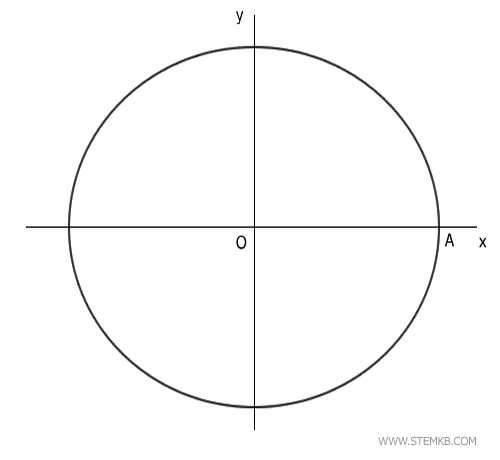
Next, pick a point P on the unit circle and mark it.
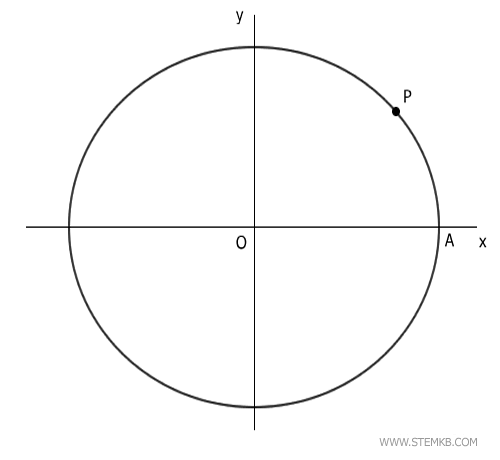
Now, sketch a right triangle, its hypotenuse stretching from the circle's center O to point P.
The triangle we've just inscribed represents our working space.
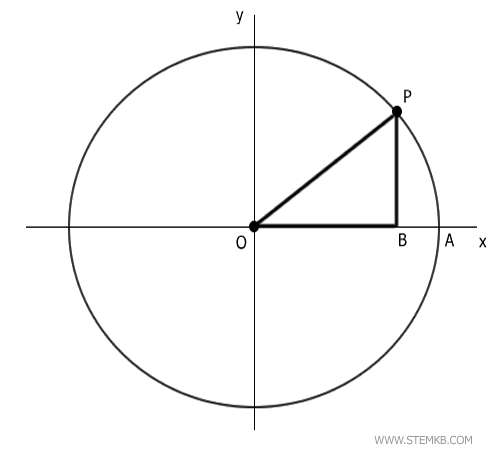
In this setting, let's think about angle θ.
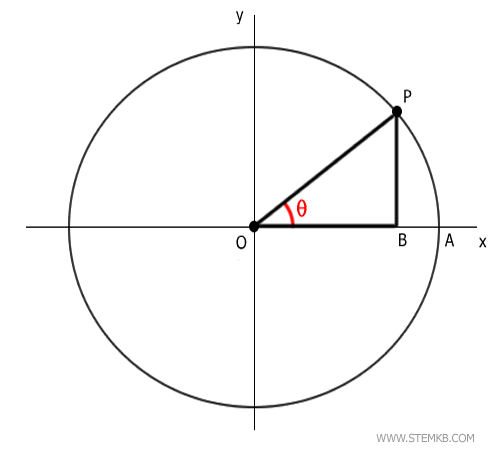
Cosine here is defined as the ratio of the side adjacent to the angle (OB) and the hypotenuse (OP)
$$ \cos(θ) = \frac{\overline{OB}}{ \overline{OP} } $$
Given that the radius OP equals 1, we can assert that the cosine of angle θ is simply the length of line segment OB
$$ \cos(θ) = \frac{\overline{OB}}{ \overline{OP} } = \frac{\overline{OB}}{ 1 } = \overline{OB} $$
So, in a unit circle, the cosine manifests as the length of the line segment OB.
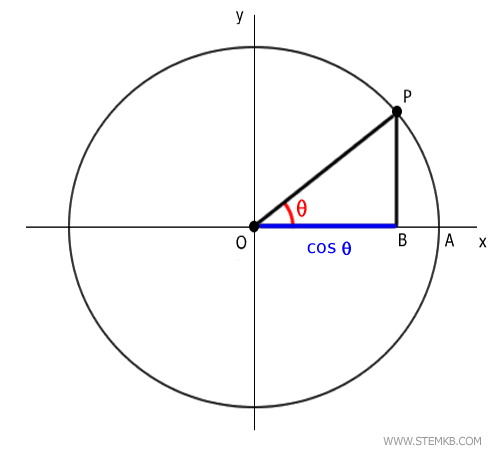
It's worth noting that when the angle lies between 0 and 90 degrees or between 270 and 360 degrees, the cosine maintains a positive value. It sways into the negative if the angle is situated between 90 and 180 degrees.
At the specific angle measures of 90 or 180 degrees, the cosine bottoms out at 0.
Conversely, when the angle is at 0 degrees or a complete rotation (360 degrees), the cosine ascends to 1.
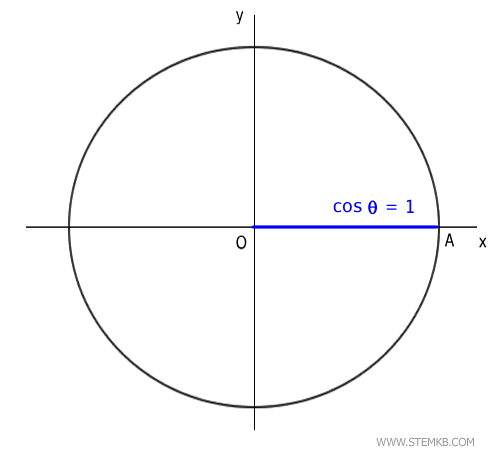
The cosine function is periodic, meaning its values trace a repetitive cycle at consistent intervals.
Specifically, the cosine has a period of 360 degrees (or 2π radians). This implies that the cosine of an angle is equal to the cosine of an angle plus or minus 360 degrees.
For example, the cosine of a 60-degree angle aligns with that of a 420-degree angle, since 420 is the sum of 60 and 360.
Here's a crucial point: the cosine of an angle θ is a dimensionless quantity. It stays constant regardless of the circle's size, as it is derived from a ratio between two lengths.
Cosine, given its significant role across numerous scientific disciplines, is a pivotal concept for anyone keen on deepening their mathematical and scientific comprehension.

